In our last episode, we looked at events that seem to happen randomly, versus something that breaks and stays broken. Let’s call them hiccups. I had too many for one Puzzler, so this is Hiccups Part 2. The annoying thing about hiccups is there’s no guarantee it won’t happen again. Part of you is glad it’s just a hiccup that appears to have corrected itself, but there’s this nagging feeling that it might happen again — and probably at the worst possible moment. Or maybe I’ve just read Fate is the Hunter once too often…
We’ll start this month with data from a Cessna 340 with RAM VII modified Continental TSIO-520 engines and data from a Garmin G1000 with a 1 sec sample rate. Here’s the overview of the 23 min flight. Nothing special about the cursor placement, just getting it out-of-the-way.
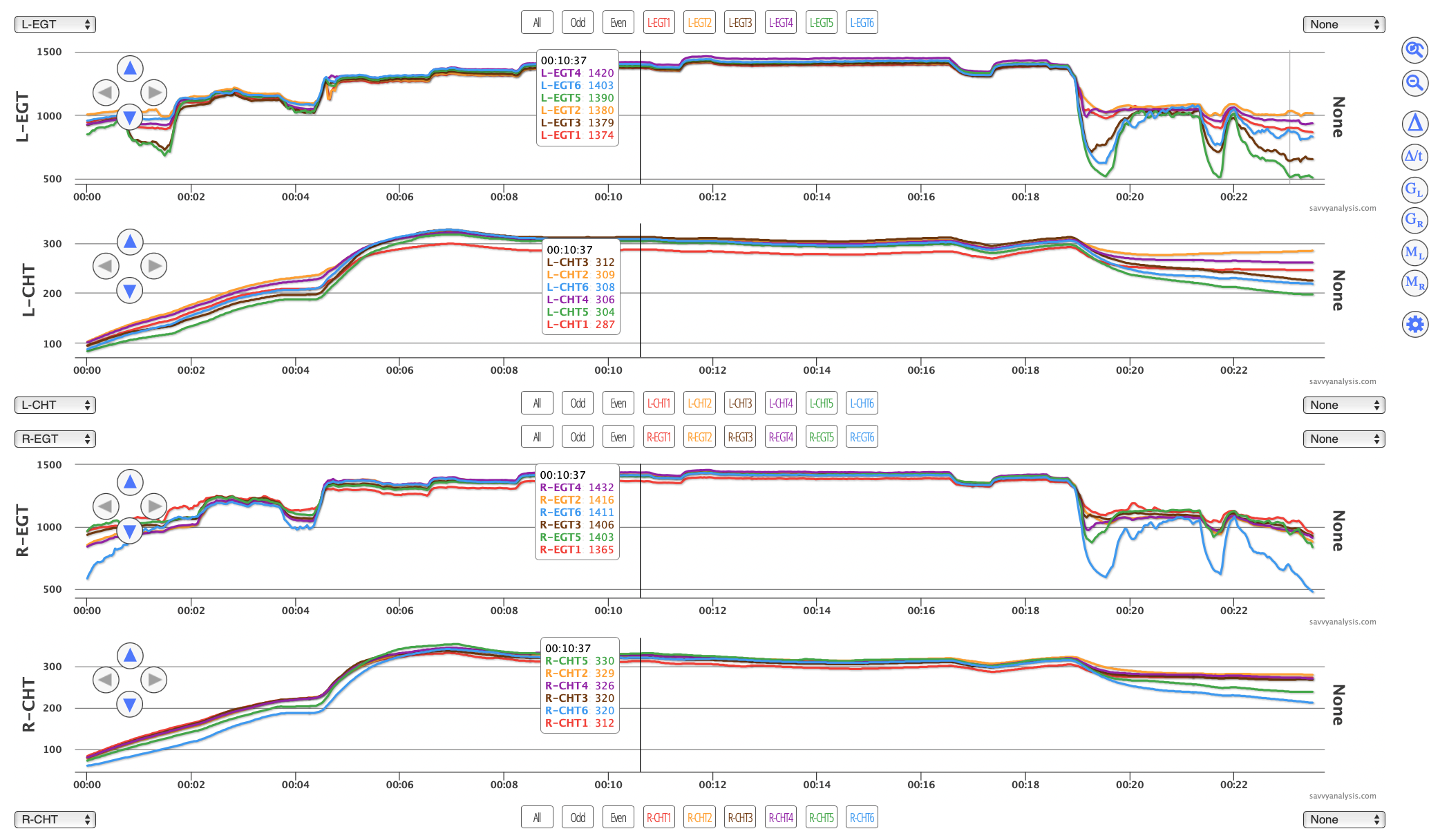
The client reported —
L engine dropped RPM and MP significant enough to cause yaw on the takeoff roll. On a following flight, this did not occur. Has been fine since, not sure what this was. Plane sat for 3 days prior to this flight, I did not notice any water or debris in fuel samples taken immediately prior the flight. No fuel was added at this location.
Let’s zoom into the L engine starting just before takeoff and display EGT, then FF, then MAP and RPM, and below all that is R engine FF as a reference point. Again, cursor is just out of the way.

Now that you’ve seen the patterns, here’s the same data with the cursor displaying the numbers.
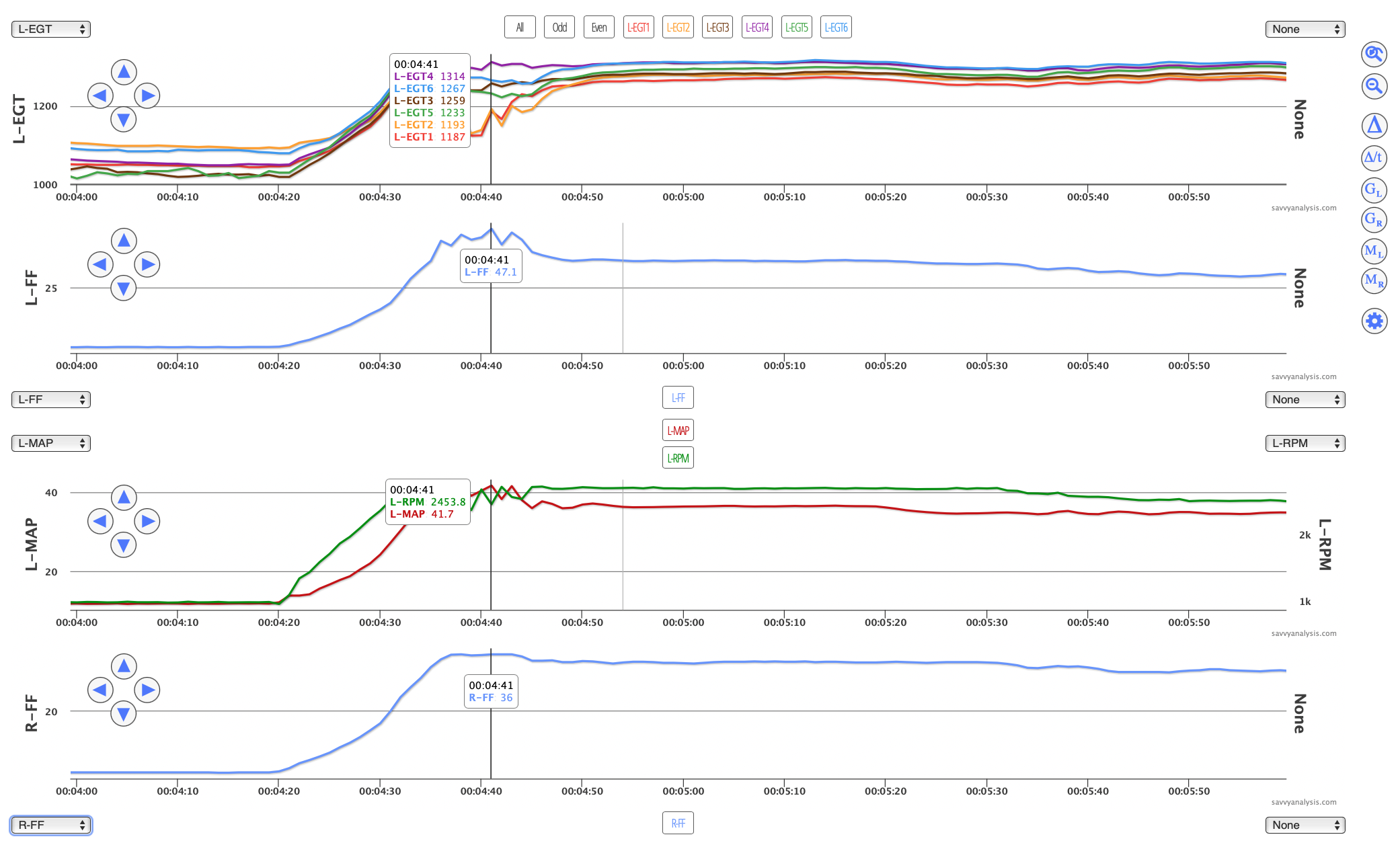
RAM SID 2006-01 lists the full-power specs for the TSIO-520-NB as 41″ MAP, 2700 RPMs, and 34.0-36.0 GPH. This data shows R engine FF is right on the high end of the spec, but L engine FF is much higher – peaking at 47.1 GPH. The turbo controller delivered its 41″ of MAP, which pretty much rules out a failure of the turbo controller.
If you’re thinking maybe low oil temperature contributed to the high FF reading, oil temp was about 100° at takeoff, which is lower than the 160° that we’d like to see when comparing actual numbers against the spec. But it was about 100º for the R engine, too, and the R engine delivered full power without a hiccup. That’s the cool thing about doing analysis on a twin. You have a “control group” to compare to.
Also interesting to note that only cyls 1 and 2 choked (pun intended) on the extra fuel. The other four hung in there. In the day or two that we formulated our analysis and diagnosis, the airplane kept flying, without incident. The client checked with his shop who suspected the aneroid in the fuel pump had stuck. We decided to monitor it and if it happened again try and gather useful troubleshooting info. First flight of the day? After refueling? It’s now about 10 months since this hiccup and the extra boost of FF hasn’t happened again – so far.
Next up is data from a 1965 Cessna 182 with a Continental O-470 engine and data from a JPI 830 with a1 sec sample rate. This is the whole flight showing EGTs, CHTs and FF.
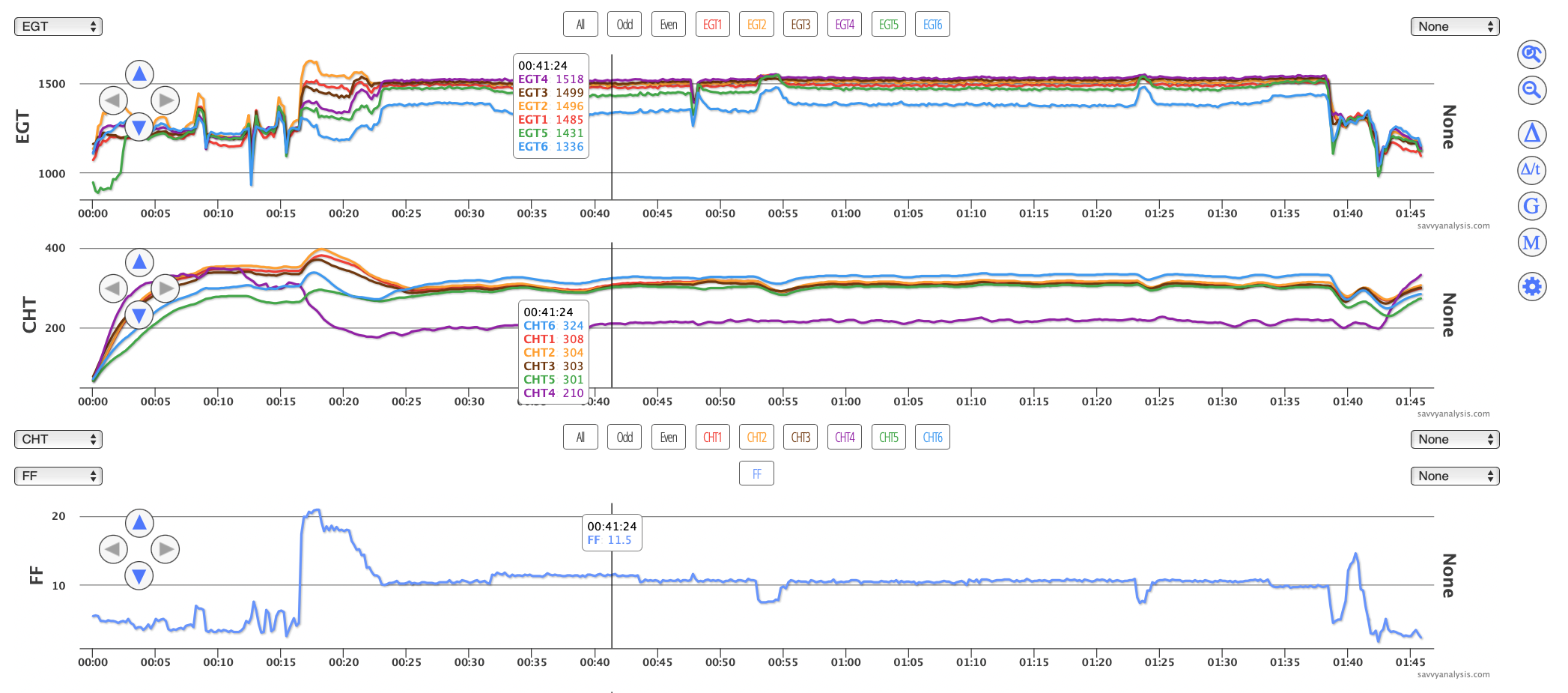
The client reported —
When I started the takeoff roll, everything was good for about two seconds. Then, I had a brief drop in power. I aborted the take off, did another run up, and everything was fine the second time.
Let’s zoom into the two takeoffs – one just after the 12 min mark and the other 4 mins later. Cursor is off to the right and out of the way.
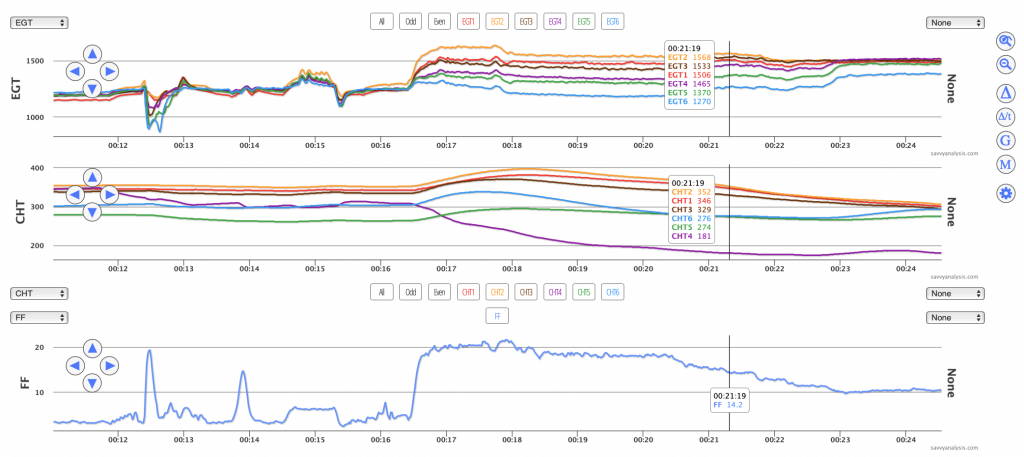
Here’s the same data zoomed in even further to the first takeoff at 12 mins. And I have used our ∆/t tool to quantify the change in FF when power is applied.
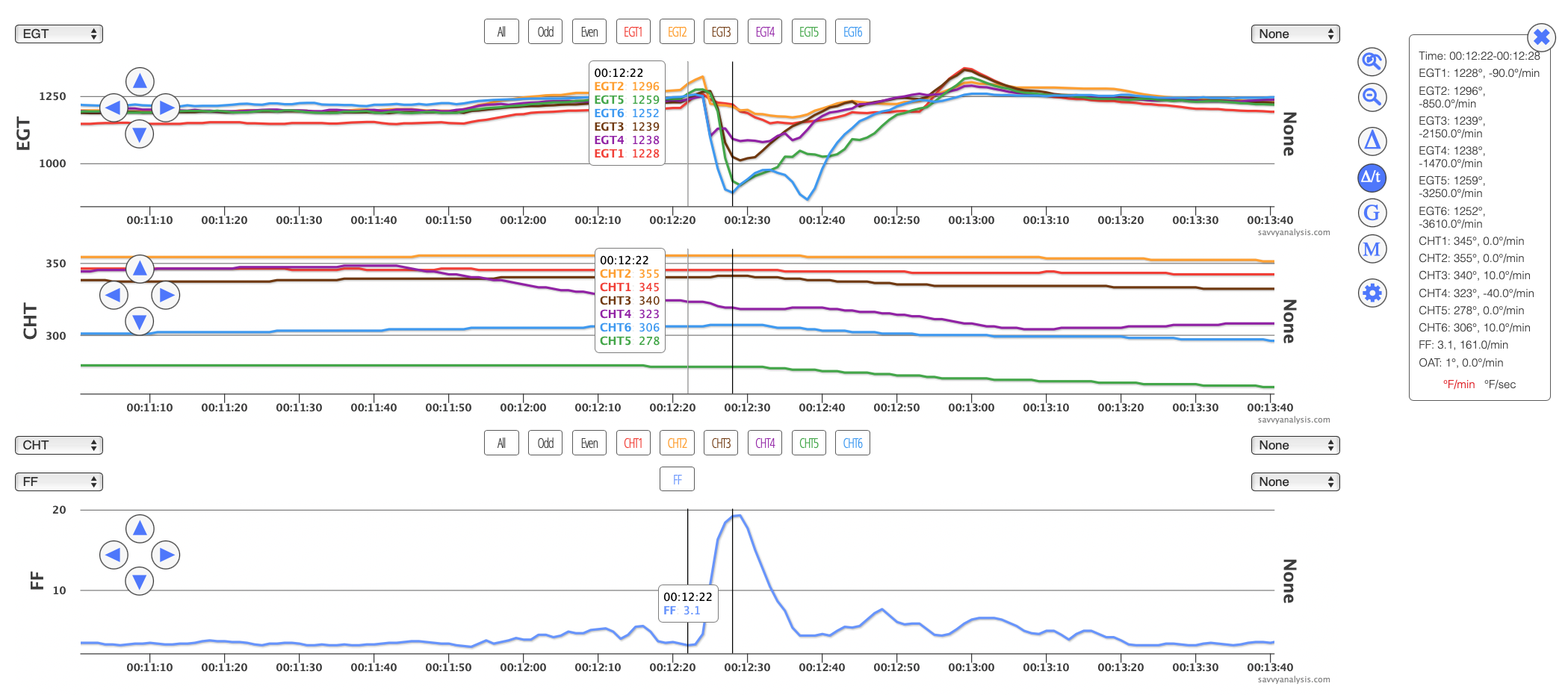
Our theory was that the engine got too much fuel all of a sudden and choked. Comparing the 161.0/min FF rate of change from the takeoff at 12 mins to the later – successful – takeoff at 16 mins where the FF rate ∆/t was about 90 supported our theory. My carbureted 240Z does the same thing if I give it too much gas from a standing start. It’s almost 50 but still 7 years younger than this 182.
By the way, CHT 4 is low in this data because of a known probe failure that was corrected soon after this flight.
To close out our hiccup series, here’s data from a Cessna 400 with a Continental TSIO-550 and data from a Garmin G1000 with a 1 sec sample rate. Here’s the whole flight showing EGTs, CHTs and FF. Cursor is out of the way.
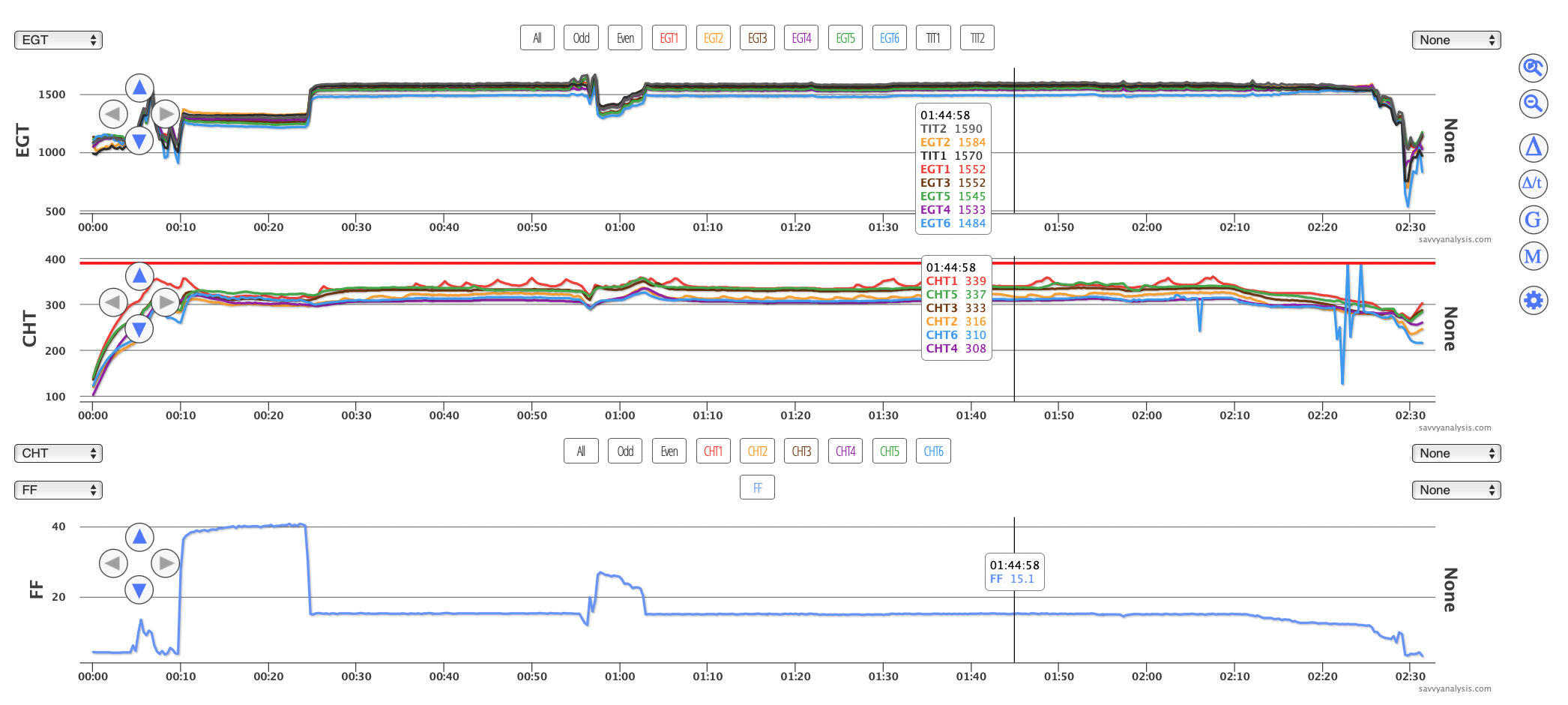
The client reported —
Just before the 1 hour mark, both TIT’s suddenly increased in temps after being stable in cruise for 1/2 or so. My first reaction was to lean out the mixture a bit, but this had no effect, they still kept climbing. I reduced MP and FF but again this did not stop the temps from going up.
Throughout the rise in TIT’s I did not notice any change in engine perfrmance or noise. The MP appeared stable throughout the whole episode, it only changed when I manually changed it. Same goes for the FF, it only changed when I adjusted the mixture setting. The rest of the flight progresed normally after the event.
Before we zoom into the event, notice the wavy pattern in CHT 1 – the red trace. There’s a smaller pattern in CHT 2 – the orange trace. And CHT 6 – the blue trace – has a bunch of spikes mostly in the descent phase, which is where CHT 1 starts to calm down. We think CHT 1 and 2 are a cooling baffle issue, because they’re at their wobbliest when airspeed is highest. And we think CHT 6 is a failing probe, but it never hurts to check the connection first.
Here’s the data zoomed in to the event, with EGTs 1-3-5 and TIT 2 on top, and 2-4-6 and TIT 1 below. We already know FF doesn’t trigger this event – the changes are in response to the event.

Let’s zoom in one more time to EGTs 1-3-5 and TIT 2 because they’re the ones that move. Actually 1 doesn’t move much but is good to have for reference.
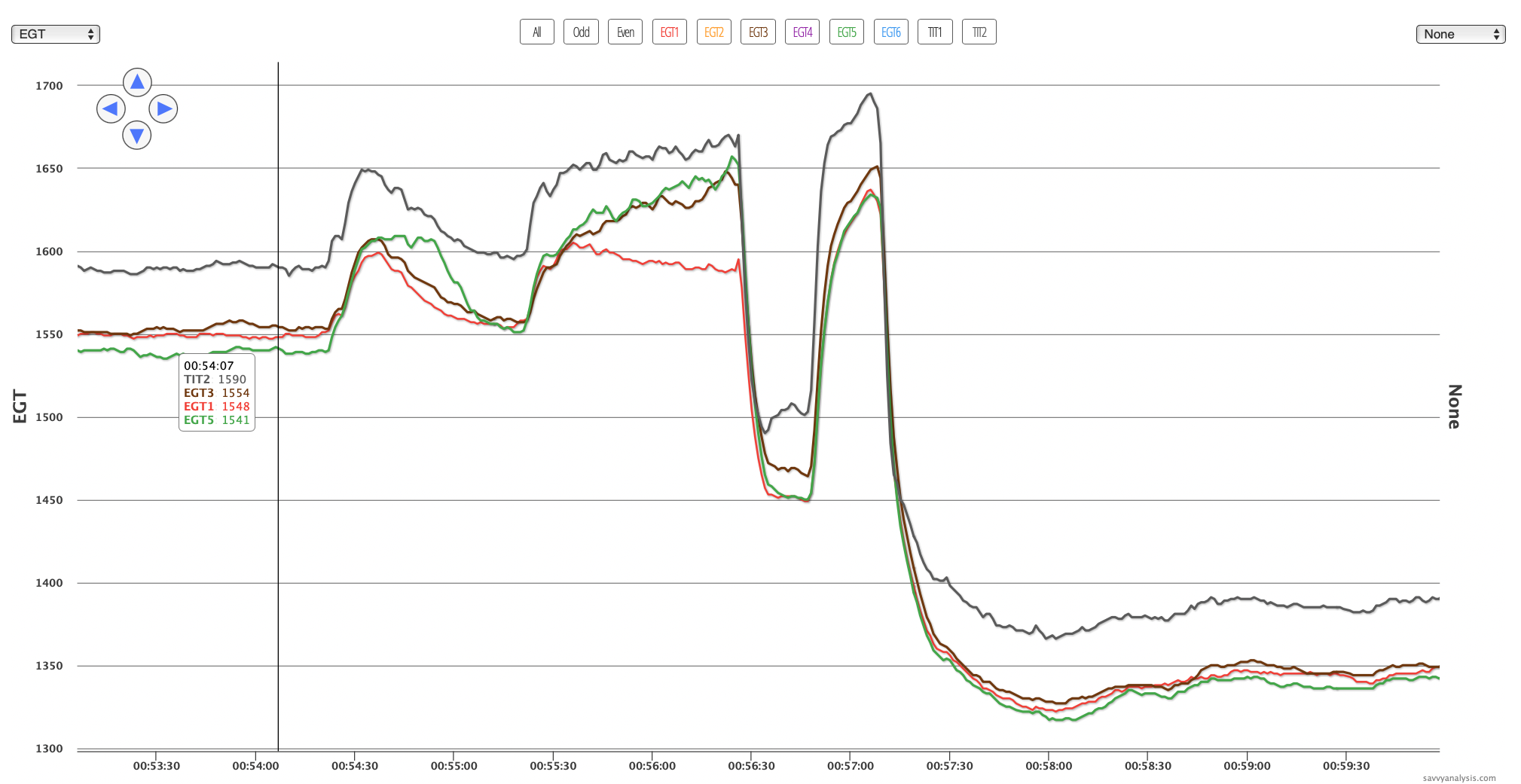
This TIT excursion appears to be linked to cyl 5, but let’s not let cyl 3 off the hook just yet. Can we rule out vapor lock? We think so, because it’s not the whole fuel system, it’s just one or two cyls. It looks like a spark problem and could be related to the mags – which are pressurized on this engine – and we probably can’t rule out a mixture problem, except that 15 GPH is not very lean on this engine. And then we have this —
The rest of the flight progresed normally after the event.
So we have officially designated this as a hiccup and will wait for it to happen again – and won’t be disappointed if that never happens.